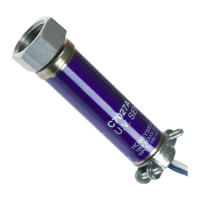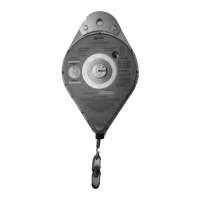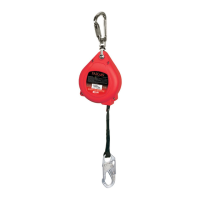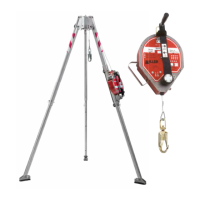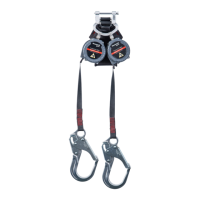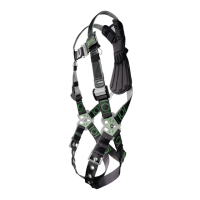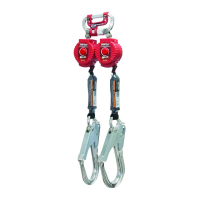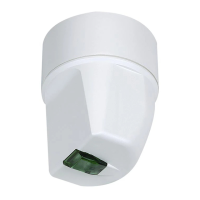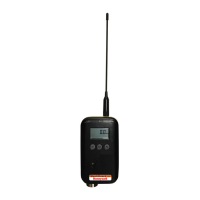MINIPEEPER
®
ULTRAVIOLET FLAME DETECTORS
60-2026-16 8
Fig. 8. Mounting C7044A Detector on blast tube.
The C7044 is mounted in a 29/32 in. (23.0 mm) hole in the
blast tube. The mounting bracket is fastened to the blast tube
with 2 screws on 1-27/64 in. (36.1 mm) centers.
The mounting bracket is designed so that the detector can be
removed from the blast tube for cleaning and then replaced
without disturbing the sighting angle. Loosen the 2 screws
holding the bracket to the blast tube, but do not loosen the
clamp screw on the bracket. Twist both the bracket and
detector to remove them.
WIRING (ALL MODELS—FIG. 9)
Equipment Damage Hazard.
Can cause improper operation.
The blue leadwire must be connected to the F terminal
of the flame safeguard control subbase or terminal strip
and the white to the G terminal (see Fig. 9). Failure to
observe the circuit polarity by reversing the leadwires
(even momentarily) may cause the flame detector to
improperly supervise the combustion flame.
NOTICE
Per industry standards, a conduit seal, or a cable type that is
sealed, is required to be installed in a device that can result in
a flammable gas or flammable liquid flow through a conduit or
cable to an electrical ignition source in the event of a seal
leakage or diaphragm failure.
IMPORTANT
All wiring must comply with applicable local electrical
codes, ordinances and regulations. Use NEC Class 1
wiring.
The detector has color-coded leadwires. See “Specifications”
on page 2 for details.
1. Keep the flame signal leadwires as short as possible
from the flame detector to the terminal strip or wiring
subbase. Capacitance increases with wire length, reduc-
ing the signal strength.
NOTE: The maximum permissible leadwire length depends
on the type of leadwire and the conduit type and
diameter. The ultimate limiting factor in flame signal
leadwire length is the signal current or voltage at the
flame safeguard device. See Table 1.
2. If needed, splice detector leadwires for longer leadwire
runs, observing the following considerations:
a. Make required splices in a junction box.
b. Use moisture-resistant no. 14 wire suitable for at
least 167°F (75°C).
c. For high temperature installations, use moisture-
resistant no. 14 wire selected for a temperature rating
above the maximum operating temperature.
d. F and G wires must be run in their own conduit inde-
pendent of other power carrying leadwires. More
than one scanner F and G wire can be run in the
same conduit.
e. A shielded twisted pair wire may be substituted for
using conduit for routing the F leadwire. Be advised
of the capacitance per foot of shielded wire effec-
tively reduces the flame signal at the flame safeguard
device. Be sure to ground the shield to the G terminal
at the flame safeguard wiring subbase.
f. The detector wires need to be run in their own con-
duit as well, avoiding other electrical noise carrying
wiring.
g. The scanner wires should remain separated a mini-
mum of two in. (51 mm) from other line voltage wires
in the main control panel to the flame safeguard
device.
8-32 RHIS
(EUROPEAN M-4)
SCREW (2)
29/32 IN. (23.0 mm)
MOUNTING HOLE
IN BLAST TUBE
MOUNTING
BRACKET
C7044A
DETECTOR
CLAMP
SCREW
M3020B
1-27/64 IN.
(36.1 mm)
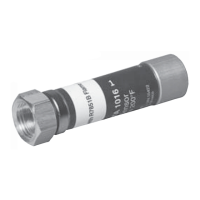
